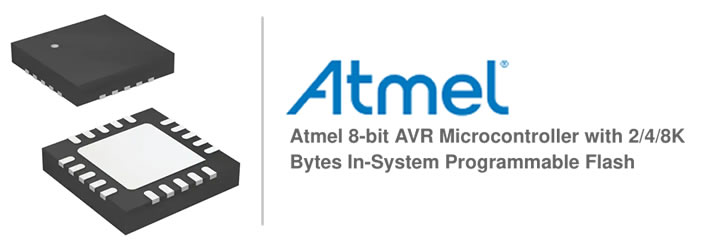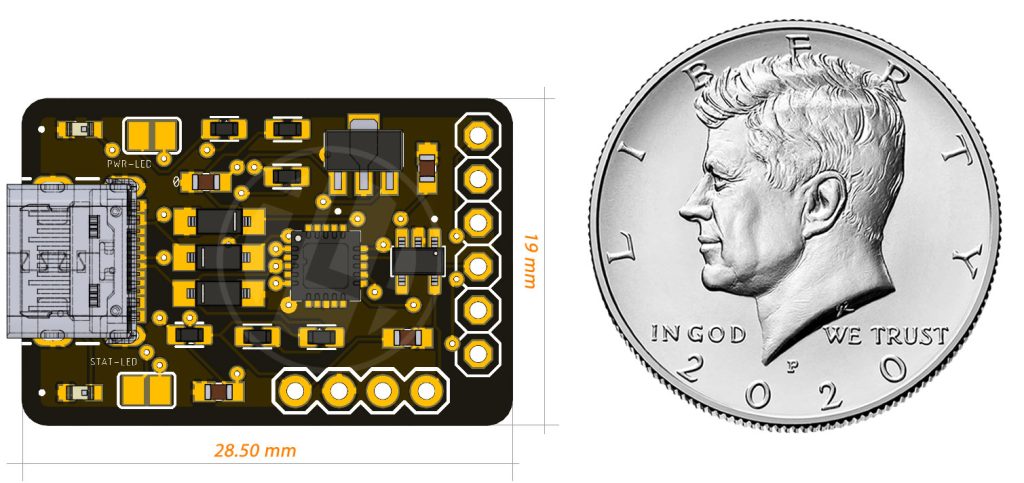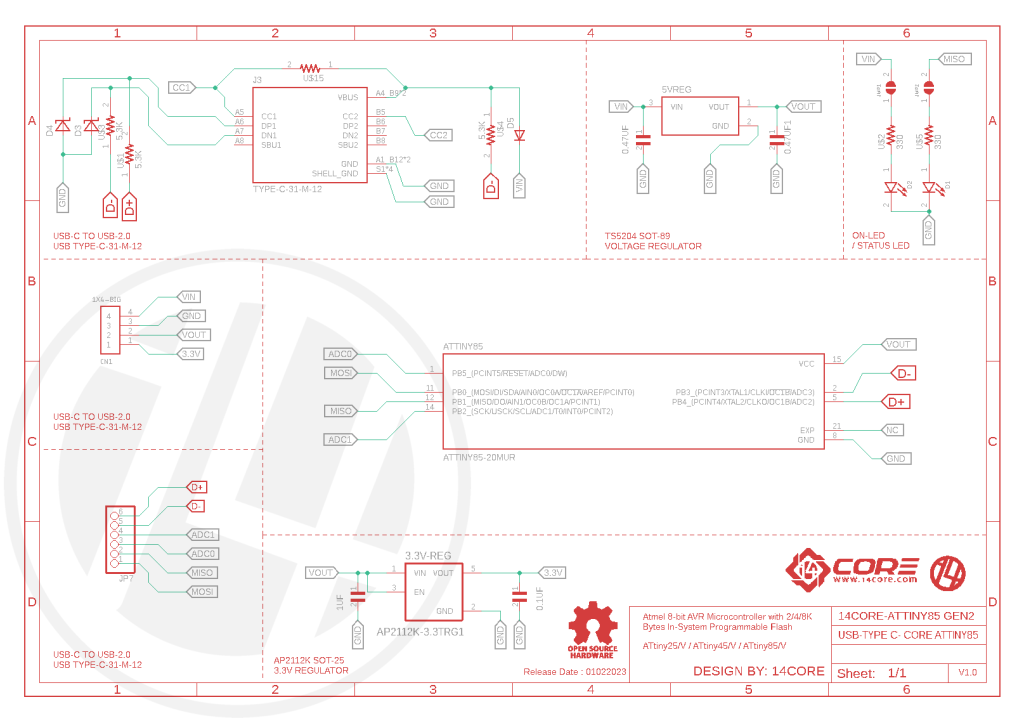An 8-bit microcontroller is a type of microcontroller that has an 8-bit central processing unit (CPU). It is a compact integrated circuit that contains all the components needed to control electronic systems or devices. The 8-bit architecture refers to the number of bits the CPU can process at once.
8-bit microcontrollers are commonly used in small-scale electronic devices and appliances because of their low power consumption, small size, and low cost. They are capable of executing simple tasks such as controlling input/output (I/O) operations, timers, counters, and other basic operations.
Examples of 8-bit microcontrollers include the Atmel AVR, Microchip PIC, and Texas Instruments MSP430. They are often used in applications such as consumer electronics, automotive systems, industrial control systems, and medical devices.

8 Bit Microcontroller Series from ATMEL:
Ttiny25 – 2Bit / ATtiny45 – 4Bit / ATTINY85 – 8Bit
The ATtiny25 and ATtiny45 microcontrollers are part of the same family of microcontrollers as the ATtiny85, but with different specifications and capabilities.
The ATtiny25 microcontroller is an 8-pin microcontroller with 2KB of flash memory, 128 bytes of RAM, and 128 bytes of EEPROM. It has a single 8-bit timer/counter, a universal serial interface (USI), and supports up to 6 I/O pins. The operating voltage range is 1.8 to 5.5 volts, and the maximum clock speed is 20 MHz.
The ATtiny45 microcontroller is also an 8-pin microcontroller, but with 4KB of flash memory, 256 bytes of RAM, and 128 bytes of EEPROM. It has a single 8-bit timer/counter, a USI, and supports up to 6 I/O pins. The operating voltage range is 1.8 to 5.5 volts, and the maximum clock speed is 20 MHz.
Like the ATtiny85, these microcontrollers are designed for use in small, low-power, and cost-sensitive applications where space and power consumption are critical factors. They are often used in projects that require simple control and sensing capabilities, such as environmental monitoring, sensor data logging, and basic robotics.
To program and flash these microcontrollers, the same general steps as for the ATtiny85 are followed, including writing the firmware code, compiling the code, connecting the microcontroller to a programmer or development board, uploading the code using a programming software, and testing the code.
It is important to note that the specific requirements and steps for programming and flashing these microcontrollers may vary depending on the specific device and development environment being used, and it is recommended to consult the relevant documentation and resources for detailed instructions and support.

The ATTINY85 Microcontroller:
ATtiny85 is an 8-bit microcontroller from the AVR family of microcontrollers, developed by Atmel Corporation (now part of Microchip Technology Inc.). It is a small, low-power, and low-cost microcontroller that is designed for use in small electronic projects, where space and power are critical factors.
ATtiny85 has 8K bytes of in-system programmable flash memory, which means that the firmware can be updated even after the microcontroller is installed in a system. It also has 512 bytes of EEPROM for non-volatile data storage and 512 bytes of SRAM for temporary data storage.
The microcontroller has six general-purpose input/output (GPIO) pins, which can be used for various purposes such as driving LEDs, reading sensor data, and controlling motors. It also has an on-chip analog-to-digital converter (ADC), which can be used to measure analog signals such as temperature or light intensity.
One of the unique features of ATtiny85 is its low power consumption. It has a variety of power-saving modes, including sleep mode, which can reduce power consumption to as low as 0.1 microamps, making it ideal for battery-powered applications.
ATtiny85 can be programmed using various programming languages and development tools, such as the Arduino IDE or Atmel Studio. It is a popular choice for hobbyists and makers who want to create small and low-cost projects, such as wearable devices, home automation systems, and electronic toys.

Part Lists :
- Atmel 8-bit AVR Microcontroller
- Diods (See below schematics for required value & alternatives package
- USB TYPE C Connector
- Jumpers & Pins
- Regulators (5V / 3.3V) (See below schematics for required value & alternatives )
- SMD Led
- Resistors (See below schematics for required value & alternatives )
- Capacitor(See below schematics for required value & alternatives)
14CORE ATTINY85 G2 Schematics:
Gerber / Milling Files :
- Download PCB Milling File | ATTINY85
- Download Gerber Viewer | Windows | Linux






